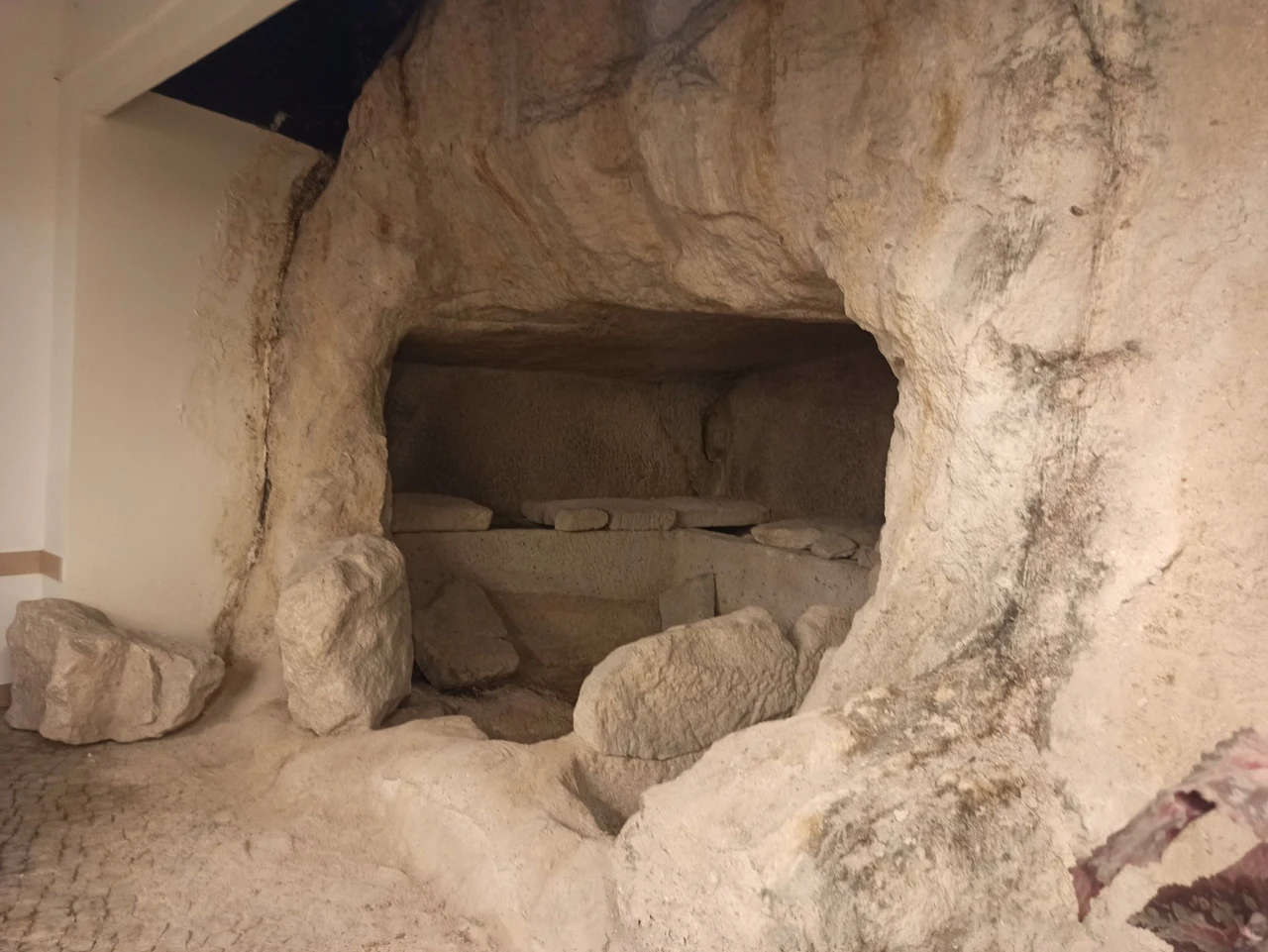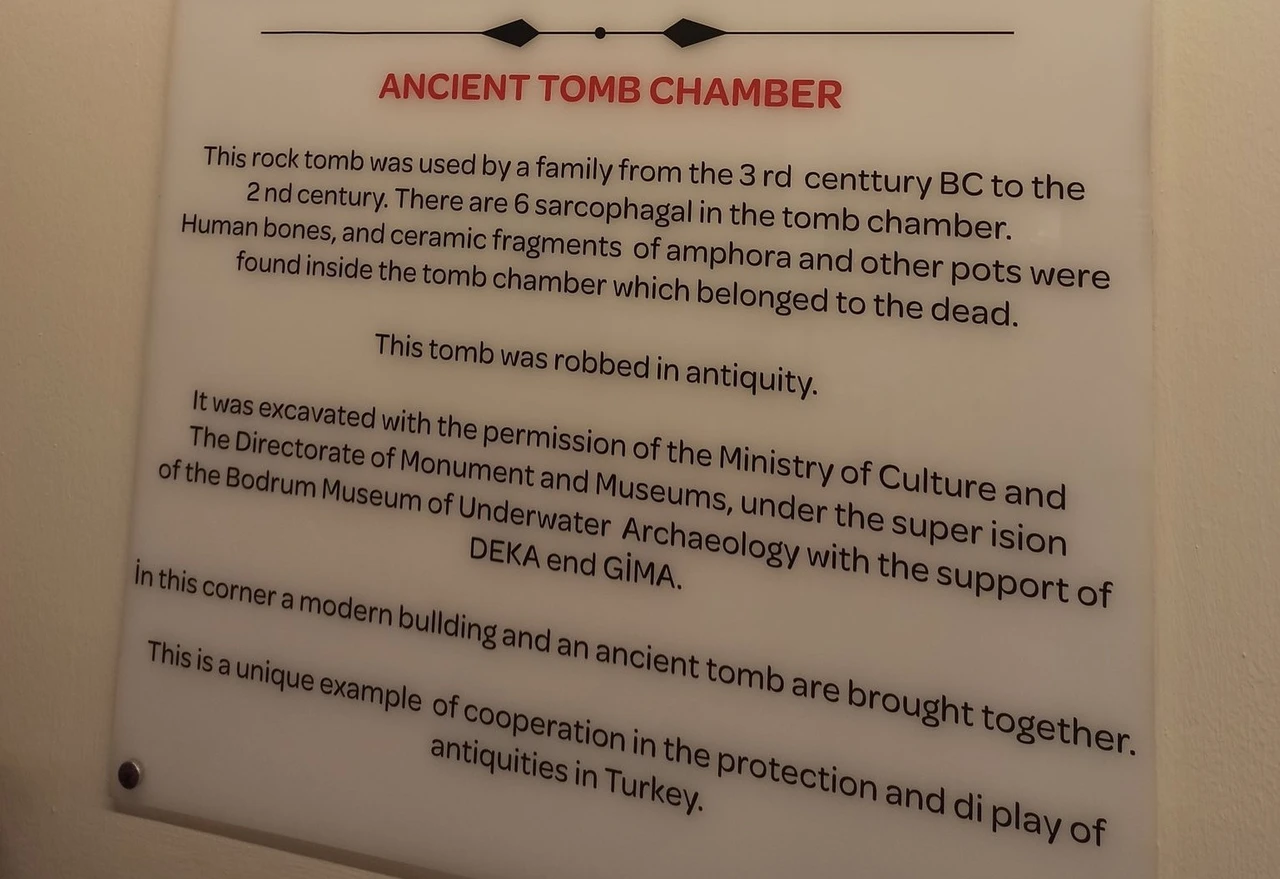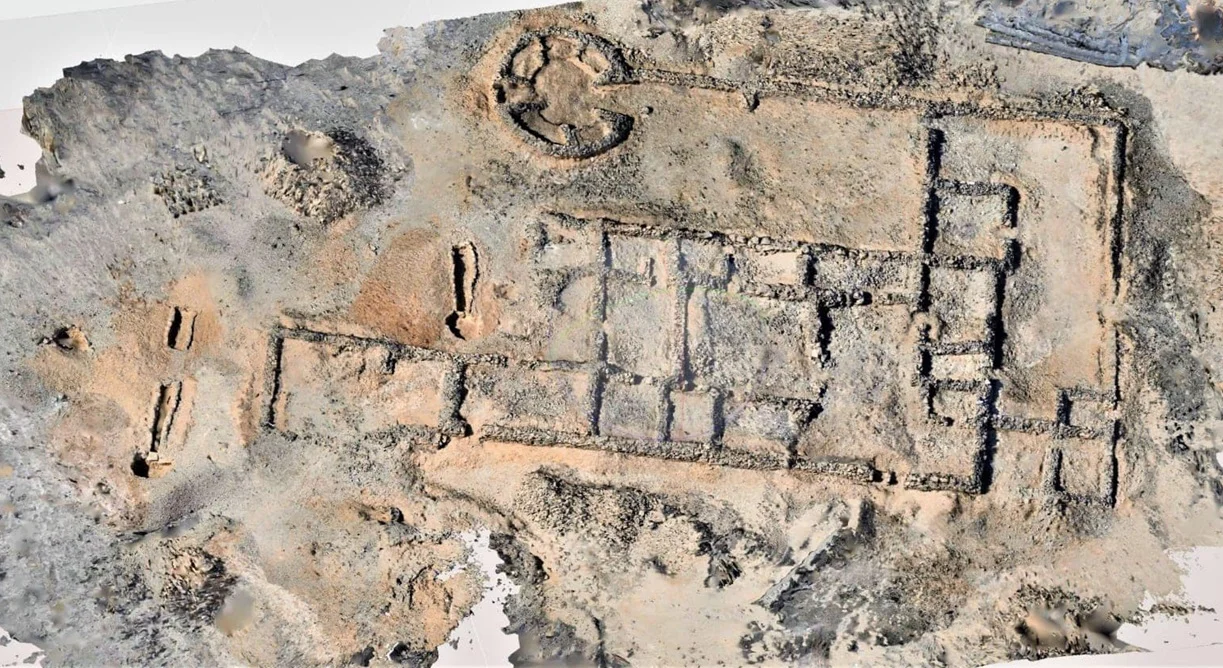In Bodrum, a major tourist center in Turkey, a 2300-year-old rock tomb lies hidden among shopping shelves. Dating back to the 3rd century BC, the rock tomb’s display inside a supermarket both creates astonishment and fuels controversy. This extraordinary situation, nicknamed the “Museum Market,” once again brings the sensitivity of protecting historical heritage to the forefront.
Discovered by chance during a construction project in the early 2000s, the tomb revealed the historical depth of the region. Construction was immediately halted, and a rescue excavation was initiated by the Bodrum Underwater Archeology Museum. The excavation, carried out with the special permission of the Ministry of Culture, revealed that the tomb belonged to a family and uncovered significant findings such as six sarcophagi, human bones, and amphora fragments.

Registered by the Izmir II Regional Board for the Protection of Cultural Assets, the tomb was integrated into the interior of the store instead of being exhibited in a museum after the supermarket was completed. This decision led to great controversy in terms of the preservation and exhibition of the historical artifact.
The tomb’s display inside the supermarket resonated widely on social media. The photos shared by architect Osman Gudu drew the reaction of many who argued that protecting historical heritage in this way was unacceptable. The question “How was this allowed?” expressed concerns about the authorities’ approach to historical artifacts.

An English panel placed next to the tomb provides visitors with information about the tomb’s history. It is stated that the tomb was used between the 3rd century BC and the 2nd century AD, and it is also known that it was looted in ancient times. However, the excavation being described as “a unique example of cooperation in the preservation and exhibition of ancient artifacts in Turkey” is one of the focal points of the controversy.
This incident in Bodrum has reignited discussions about Turkey’s cultural heritage protection policies. Many social media users argue that authorities should take action to protect the historical artifact more appropriately.





